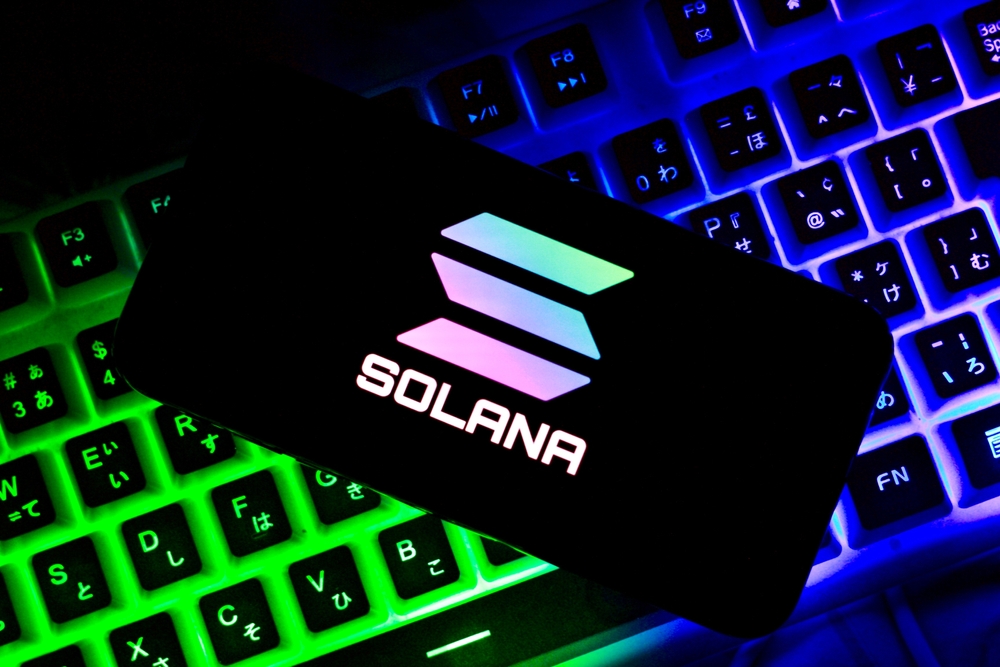Key Insights:
- Flip Research suggests bots drive Solana’s high transaction metrics, casting doubt on its outpacing of Ethereum.
- Solana’s DEX volumes appear artificially inflated by bot activity, with significant rug pulls contributing to fake volumes.
- Network congestion issues persist on Solana due to rampant bot transactions, impacting legitimate user activity and transaction success rates.
A recent report by pseudonymous researcher Flip Research, published on July 30, casts doubt on Solana’s recent surge in key metrics, suggesting that bot activity may be inflating its performance. Solana has outpaced Ethereum in daily transactions and decentralized exchange (DEX) volumes, leading to speculation about the authenticity of these figures.
On July 26, Solana registered an average of 217 transactions per user across 1.3 million active addresses, compared to Ethereum’s less than three transactions per user across 376,300 active addresses.
Flip Research attributes this stark difference to miner extractable value (MEV) and wash trading on Solana, indicating possible manipulation.
Examination of Transaction Metrics
The report highlights that Solana’s transaction metrics are suspiciously high. Solana reported 282.2 million transactions versus 1.3 million daily active users, equating to an improbable 217 daily transactions per user. In comparison, Ethereum had 1.1 million transactions across 376,300 users, or approximately 2.92 transactions per user daily. This discrepancy suggests non-organic activities such as wash trading and rug pulls.
Solana’s total fees for the week of July 22 reached $25 million, surpassing Ethereum’s $21 million. Additionally, Solana led the industry in 30-day DEX volume, with Raydium at the forefront, followed by Orca and Phoenix. Despite these figures, the report questions their validity, suggesting they are inflated by bot activity rather than genuine user engagement.
Impact on Decentralized Exchange Volumes
The report also points to artificially inflated DEX volumes on Solana, driven by bot activity and fraudulent projects. On Raydium alone, over 50 rug pulls occurred within 24 hours, generating more than $200 million in volume and $500,000 in fees. Bots conducting thousands of transactions create fake volumes before rug-pulling investors, contributing to inflated metrics.
In February, Solana’s monthly stablecoin volume exceeded $643 billion, primarily due to bot transactions on the Phoenix DEX. Despite a mainnet update in April intended to address network congestion, bot activity persists, leading to numerous failed transactions and affecting the network’s functionality.
Network Congestion and Community Response
Bot activity has significantly impacted Solana’s network performance. On April 4, Solana experienced a peak in failed transactions, with 75% of non-vote transactions failing, according to Dune Analytics. These failed transactions, primarily due to bots spamming the network, have drawn criticism from the cryptocurrency community.
Mert Mumtaz, CEO of Helis, explained that the failed transactions are largely due to bots, and raising transaction priority fees would not resolve the issue. Spam transactions occur before the scheduling process, complicating efforts to manage network congestion and affecting legitimate user transactions.
Market Reactions and Future Outlook
Amid these revelations, Solana’s native token price dropped by 4% in the past 24 hours to $178, following a broader 3% market decline. This drop also coincided with the SEC’s decision to amend its legal complaint against Binance, indicating that the court will not rule on whether Solana and nine other tokens are securities.
Additionally, the Solana meme coin market experienced significant declines, with many investors facing substantial losses. Analysts report that out of 30 celebrity meme coins launched in June, half have plummeted by 99%, seven others are down at least 90%, and even the best performers have seen drops of at least 70%.
Editorial credit: Muhammad Alimaki / Shutterstock.com
